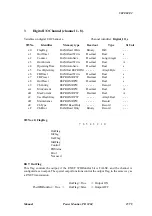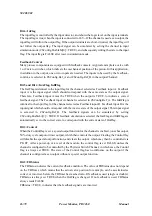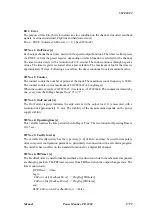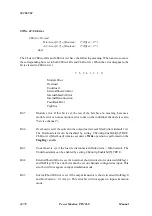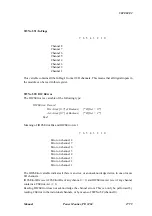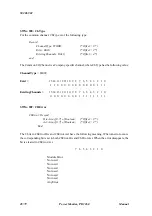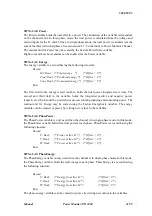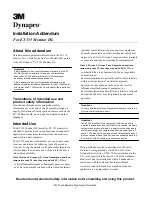
502 069 02
16/79
Power Monitor, PD 3260
Manual
Bit 6: InFlag
The input flag is controlled by the input detector, and shows the logic level on the input terminals.
The input flag is true, when the input is connected to 24V-. If the channel is used as an output, the
input flag will follow the output flag. If the output terminals are short-circuited, the input flag will
not follow the output flag. The input signal can be simulated, by setting the channel in input
simulation mode (ChConfig.Enablebit[0] = TRUE), and subsequently writing the state to the input
flag. The input flag is FALSE after reset in simulation mode.
Feedback Control
Many process components are equipped with feedback contacts. A typical example is a valve with
1 or 2 micro switches, which indicate the mechanical position of the piston. In this application,
in addition to the output, one or two inputs are needed. The inputs to be used by the feedback-
control, are selected in ChConfig.Ref_A and ChConfig.Ref_B in the output-Channel.
Bit 5 and Bit 4: InAFlag, InBFlag
The InAFlag is identical to the input flag for the channel selected as Feedback input A. Feedback
input A is the input signal which should correspond with the same state as the output signal.
Therefore, Feedback input A must be TRUE when the output is TRUE, to indicate a correct
feedback signal. The Feedback input A channel is selected in ChConfig.Ref_A. The InBFlag is
identical to the input flag for the channel selected as Feedback input B. Feedback input B is the
input signal which should correspond with the inverse state of the output signal. This input signal
is selected in ChConfig.Ref_B. The feedback signals can be simulated, by setting
ChConfig.Enablebit[2] = TRUE. If feedback simulation is selected, the InAFlag and InBFlag are
automatically set to the correct state, to correspond with the current state of OutFlag.
Bit 3: Control
When the Control flag is set, a special output function for the channel is enabled, (one shot output,
50 % duty cycle output or timer output), which then controls the output. Clearing the Control flag
will disable the special output function, and clears the output, which may then be controlled via
P-NET. After a power-up or a reset of the module, the control flag is set FALSE, unless the
channel is configured to be controlled by the Thyristor Switch Channel, in which case, the Control
flag is always set TRUE. The state of the Control flag has no influence on the output if the
channel is configured as an output without a special output function.
Bit 2: FBStatus
The FBStatus indicates the current feedback condition. The value of FBStatus does not depend
on the FBTimer, which means that the actual valve position for example, can be ascertained as
correct, or incorrect, before the FBTimer has reached zero. If feedback is used (single or double),
FBStatus is always set TRUE when the OutFlag is changed. If no feedback is used, FBStatus
always reads FALSE.
FBStatus = TRUE, indicates that the feedback signal/s are incorrect.














